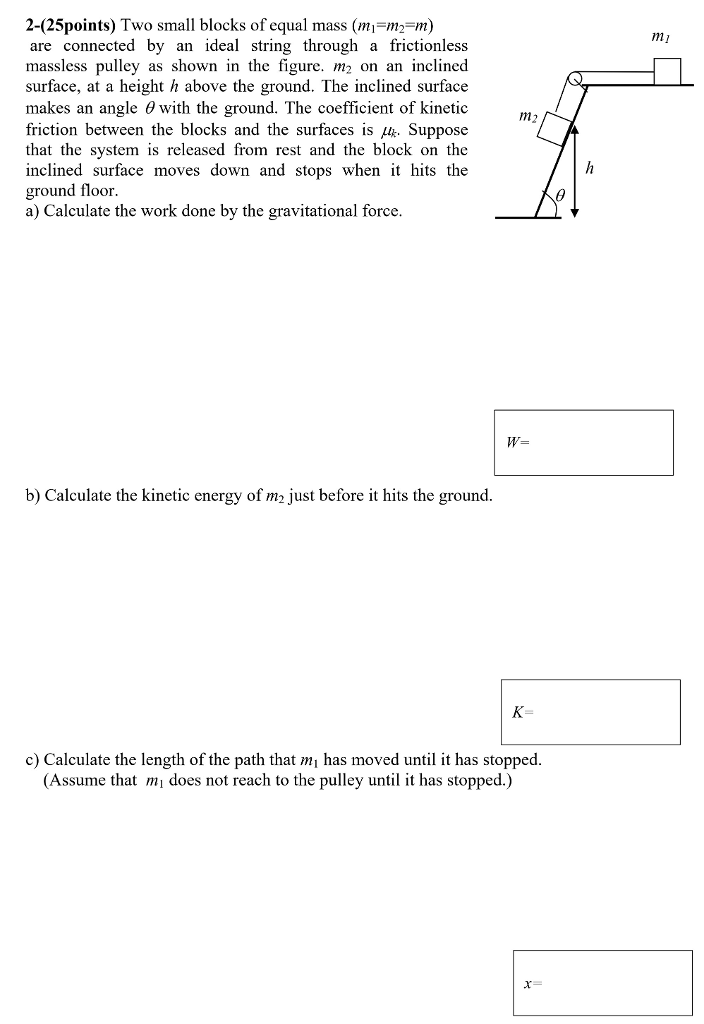
When friction acts on an object, the heat and sound released cannot be recovered.
non-conservative include frictional forces and human exertion. Electromagnetic forces are also conservative. Gravitational force can be stored as gravitational potential energy. For example, the force from a spring can be stored as spring potential energy. Conservative forces are associated with a potential energy. Work done by conservative forces are path independent. If a force doesn't dissipate heat, sound or light, then it is a conservative force. Kinetic energy is converted to heat and sound energy as a crate slides to a stop on a rough surface. Gravitational potential energy is converted to kinetic energy as an object falls, but the total amount of energy stays the same. The total amount of energy before = the total amount of energy after. m and M are the mass of the two attracting objects. G is the universal gravitation constant - it is the same for everything. r is the distance between the center of the two attracting objects. This is the general formula for gravitational potential energy. Stiff springs have a larger k because they are harder to stretch (it takes more energy to stretch them). x is distance of the end of the spring from its equilibrium position. g is larger for planets with a higher mass to radius ratio. PE = mgh is derived from a more general formula. h is the distance from the Earth's surface. PE = mgh is local because it only works on the surface of the Earth. Speed is more important than mass for the kinetic energy because speed is squared. When you double the speed, you quadruple the kinetic energy. At the same mass, the higher speed has the larger kinetic energy. When you double the mass, you double the kinetic energy. At the same speed, the larger mass has the larger kinetic energy. All types of energy have the same unit - the Joule. The unit for power is the Watt, or W (don't confuse this W with the shorthand of work). Power is the rate of work, or work over time: P = W/t. A moving object can slide against friction for a while before coming to a stop: ½mv 2 = F frictiond. A moving object can slide up an inclined plane before coming to a stop: ½mv 2 = mgh. Kinetic energy of an object can do work. When gravity does work on an object, it will move: F weighth = mgh = ½mv 2. When you pushing on an object, it will move: Fd = ½mv 2. Work on an object can transform into kinetic energy. Using pulleys can achieve mechanical advantage. 

Using the lever arm can achieve mechanical advantage.Mechanical advantage = little input force (effort) -> large output force.
Workdone on a mass moving on rough surface free#
Sliding down a frictionless inclined plane involves the same gravitational work as doing a free fall at the same height. 
Pushing an object at constant speed up a frictionless inclined plane involves the same amount of work as directly lifting the same object to the same height at constant speed.Thus, it does not matter what detour you take because sideward motion perpendicular to the gravitational force involves no work. Unlike friction, gravity always acts downwards.

Amount of work done in gravitational field is path-independent.Cosine of 90 is zero cosine of anything below 90 is positive and between 90-180 is negative. If you like math, then everything you need to know is already contained in the mathematical formula.Because you are lifting the bucket vertically while its motion is horizontal. The classic example is that no work is done by your arms when you carry a bucket of water for a mile.If the force is acting in one direction, but the object moves in a perpendicular direction, then no work is done.For a non-rotating system, friction always does negative work because it acts against the direction of motion.If the force and the distance applied is in opposite directions, work is negative.For example, pushing a crate across a rough terrain involves you doing positive work (you are pushing forward and the crate is moving forward).If the force and the distance applied is in the same direction, work is positive.Work is energy, and the unit is the Joule.F is force, d is the distance over which the force is applied, and θ is the angle between the force and distance.








 0 kommentar(er)
0 kommentar(er)
